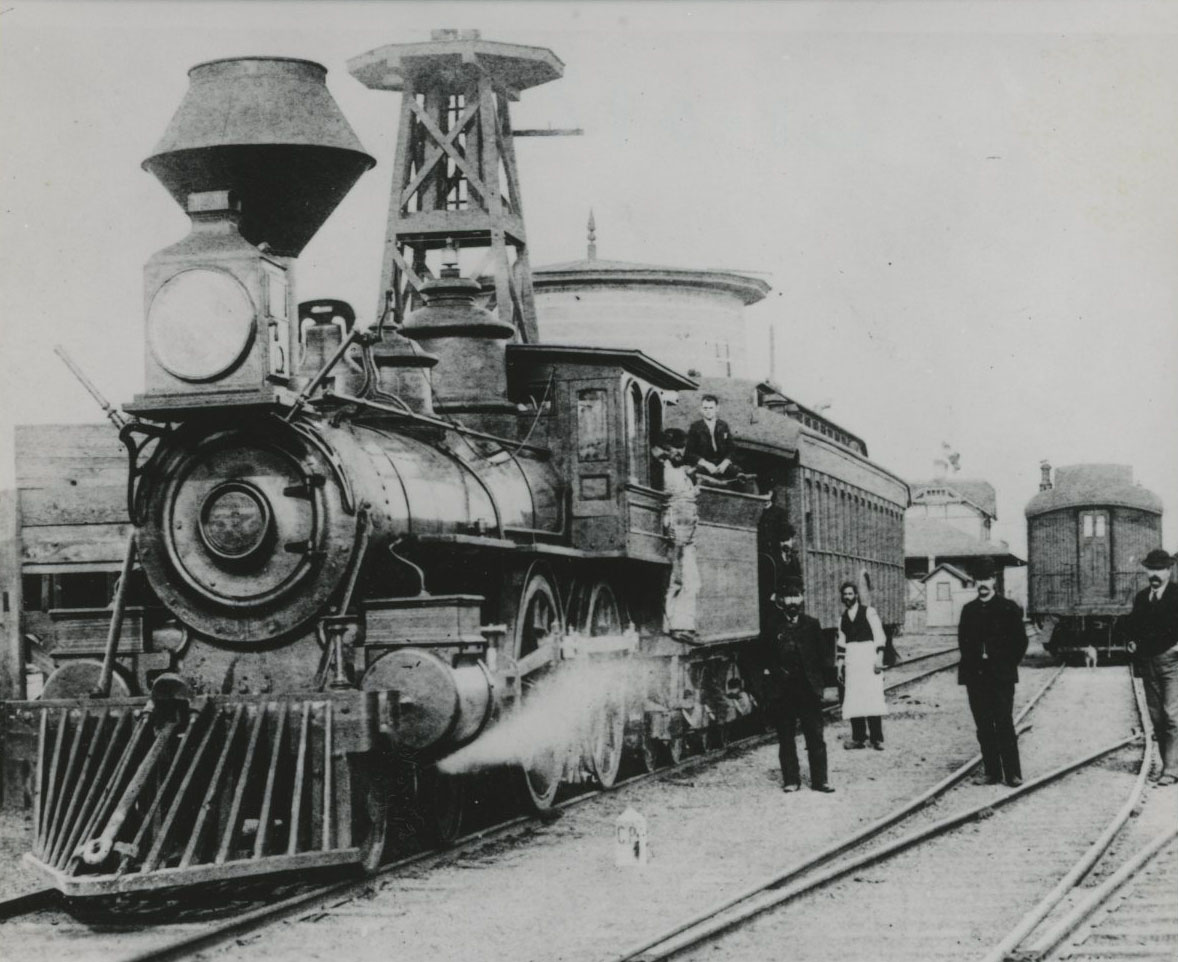On March 27, 1890, the Union Electric Light and Power Company was incorporated to build what may have been Oregon’s shortest short-line railroad. The goal was to build a line linking Union, in northeastern Oregon, with the Oregon Railway and Navigation Company mainline, which had bypassed the town in 1884.
Inadequate funding caused the project to falter at first. It was reorganized as the Union Railway on July 18, 1890, yet construction does not appear to have gotten underway until the railway was purchased by attorney J.W. Shelton on November 5, 1891. Financial difficulties continued after the laying of 2.29 miles of track between Union and Union Junction was completed in August 1892, and there is no record of regular operation until the bankrupt line was sold to James Hutchinson on December 22, 1894.
Under Hutchinson’s leadership, the Union Railway was renamed the Union Street and Suburban Railway, suggesting that a street railway operation was contemplated. A secondhand “dummy” locomotive from the Ogden, Utah, streetcar system inaugurated service in early 1895, pulling a combination passenger and baggage car. (A “dummy” was a small steam locomotive housed in a streetcar-like body designed to be less frightening to passing horses.) As the railway acquired other old locomotives, however, it developed into a short-line railroad rather than an electric streetcar or interurban system.
The railway underwent several more name changes. A local corporation known as the Union, Cove and Valley Railroad (incorporated on August 5, 1905) purchased the Union Street and Suburban Railway on March 3, 1906. It was sold again on June 26, 1906, to the Central Railway Company of Oregon (incorporated on June 2, 1905).The Central Railway promised to build an interurban electric railway to La Grande, but that scheme was never realized. Railroad extensions were added 10.54 miles north through timberland to Cove and 3.29 miles east to the Hot Lake resort.
From April 29, 1909, until its last engine was condemned on December 8, 1926, the company was part of the 16-mile-long Central Railroad of Oregon. On April 29, 1928, however, an independent Union Railroad of Oregon was incorporated to operate the original track between Union and Union Junction, and the rails beyond Union were abandoned.
The Union Railroad stopped running in early 1989 when the lumber mill it served shut down. The railroad that aspired to be an interurban railway but ended up the shortest of short lines was gone.
-
![Union Railway map, 1905, with 1906-1911 extensions in inset]()
Union Railway Map, 1905.
Union Railway map, 1905, with 1906-1911 extensions in inset Courtesy Richard Thompson
-
![1890 vintage former Chicago & Alton RR 0-4-0 "American" style No. 12 was the only locomotive on the Central Railroad of Oregon for several years.]()
Former Chicago & Alton R.R. "American" style No. 12 arrived 1909.
1890 vintage former Chicago & Alton RR 0-4-0 "American" style No. 12 was the only locomotive on the Central Railroad of Oregon for several years. Courtesy Richard Thompson
-
![Steam dummy engine, c.1890.]()
Steam dummy engine, c.1890..
Steam dummy engine, c.1890. Courtesy Richard Thompson
Related Entries
-
![La Grande]()
La Grande
La Grande, the seat of Union County, is nestled in the eastern foothill…
-
![Oregon Railway & Navigation Company]()
Oregon Railway & Navigation Company
Recognizing the opportunity to monopolize access to Oregon by the trans…
-
![Union]()
Union
With roots stretching back to 1862, Union is situated on Catherine Cree…
Map This on the Oregon History WayFinder
The Oregon History Wayfinder is an interactive map that identifies significant places, people, and events in Oregon history.
Further Reading
"Union Railroad of Oregon." Trainweb online: http://www.trainweb.org/highdesertrails/uo.html
Johnson, Lee C. "City Wages Fight for Railroad Right." Sunday Oregonian, February 6, 1949.
Robertson, Donald B. Encyclopedia of Western Railroad History Vol. III: Oregon and Washington. Caldwell, ID: Caxton Printers, 1995.
Roth, Richard. The Central Railroad of Oregon, Oregon's Blue Mountain Route. Family Roots Publishing Company, 2015.









